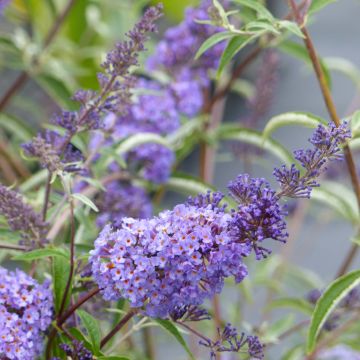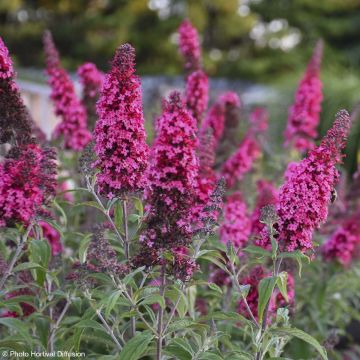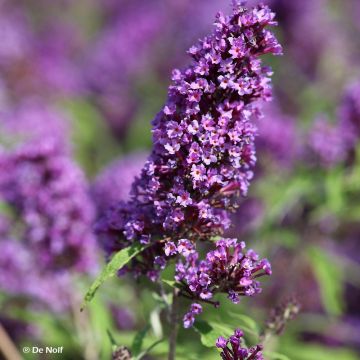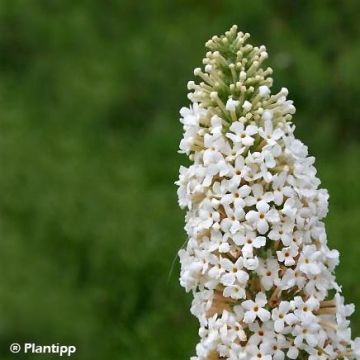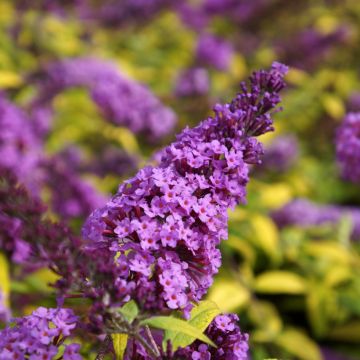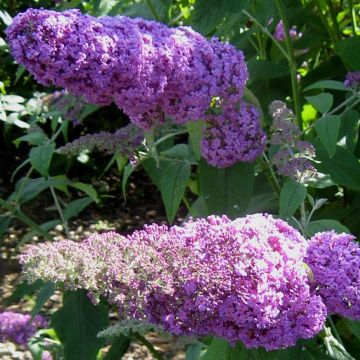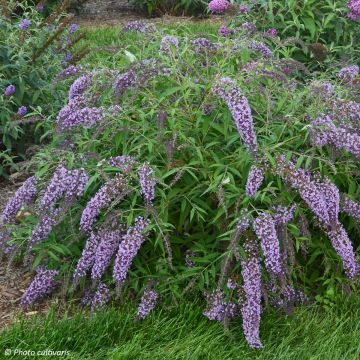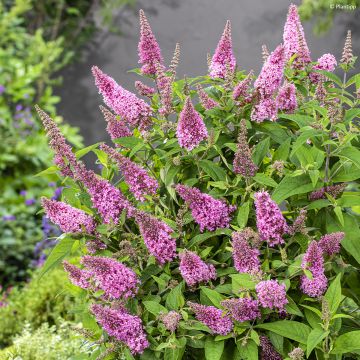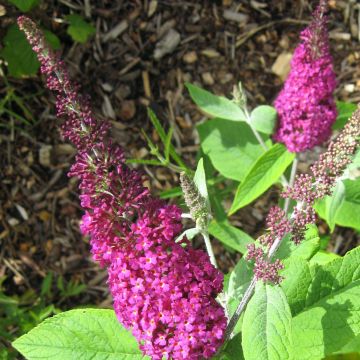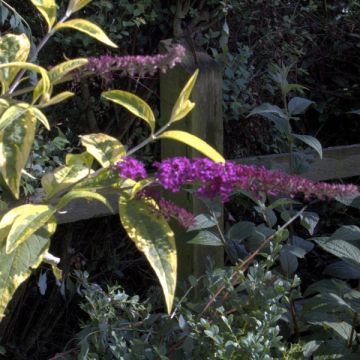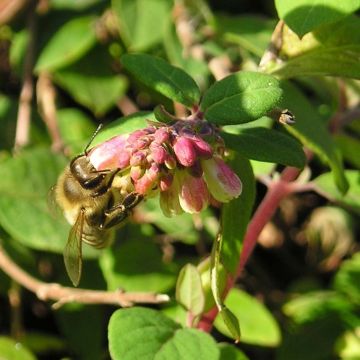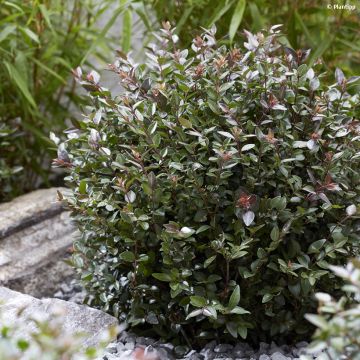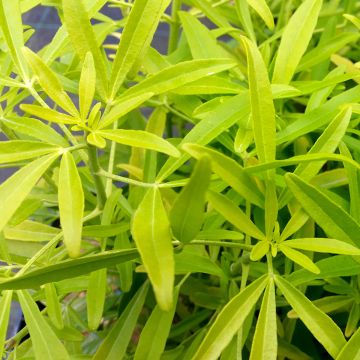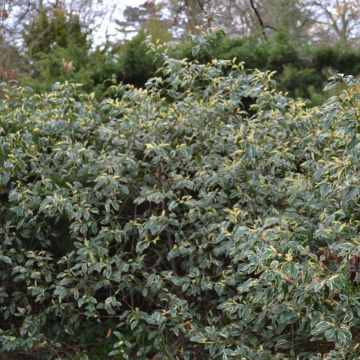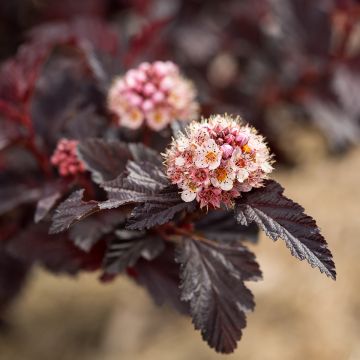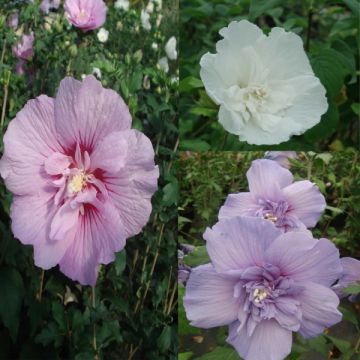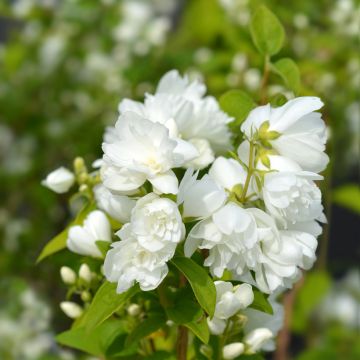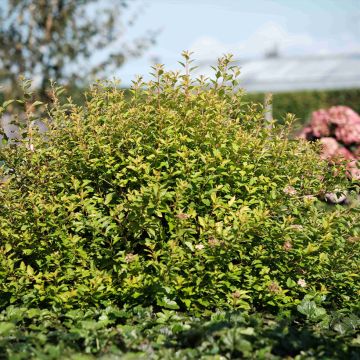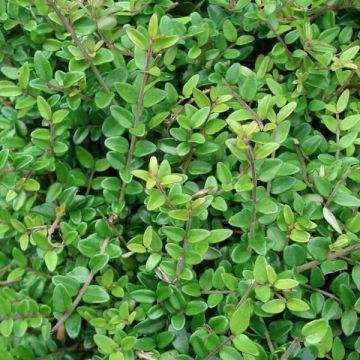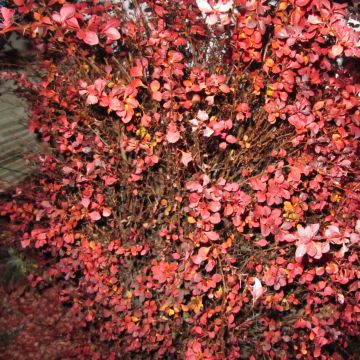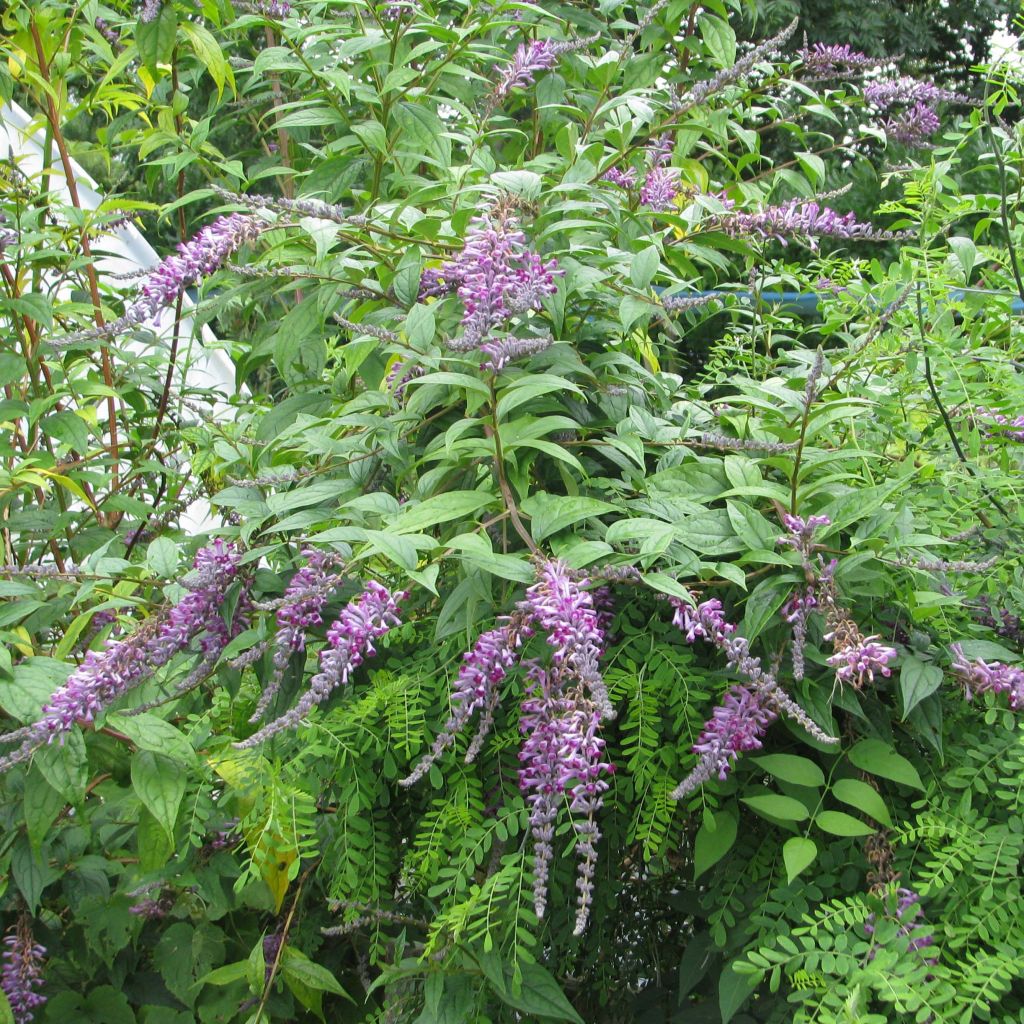

Buddleja lindleyana - Butterfly Bush
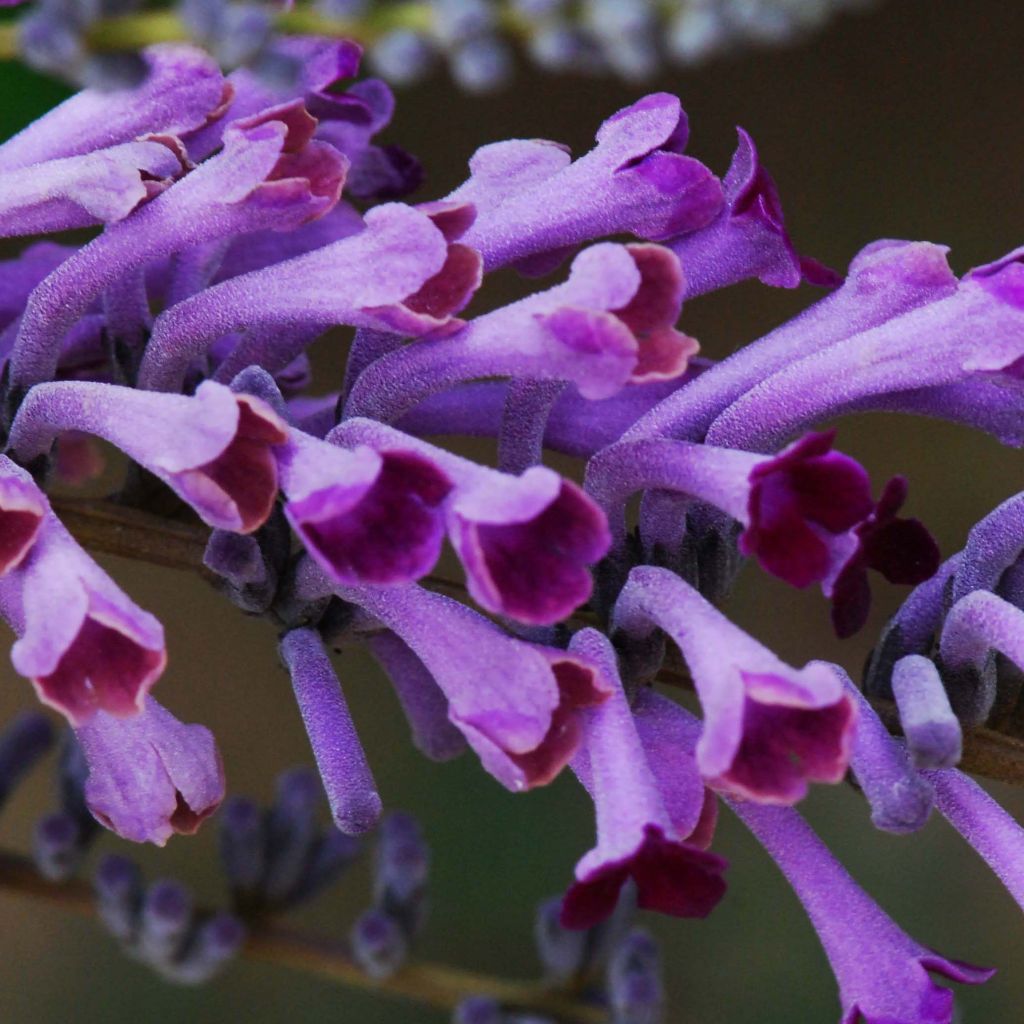

Buddleja lindleyana - Butterfly Bush
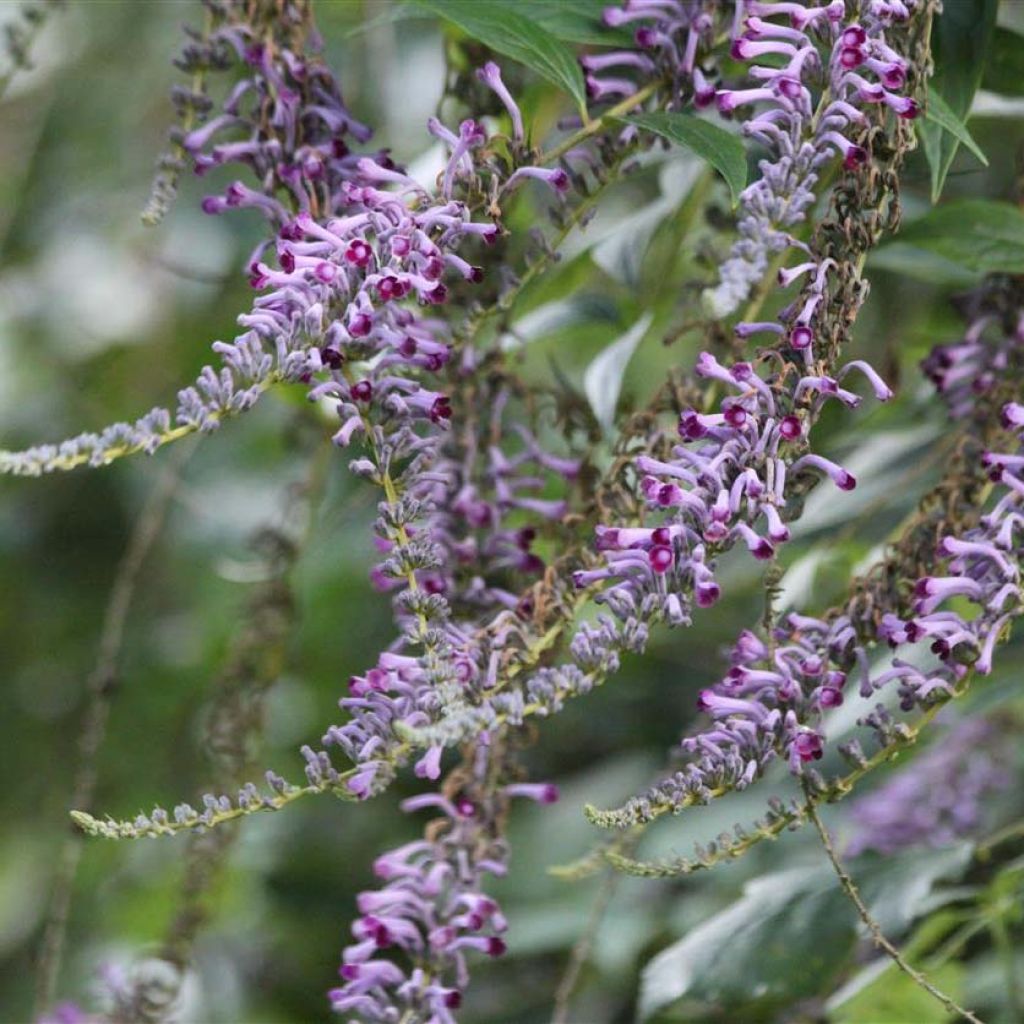

Buddleja lindleyana - Butterfly Bush
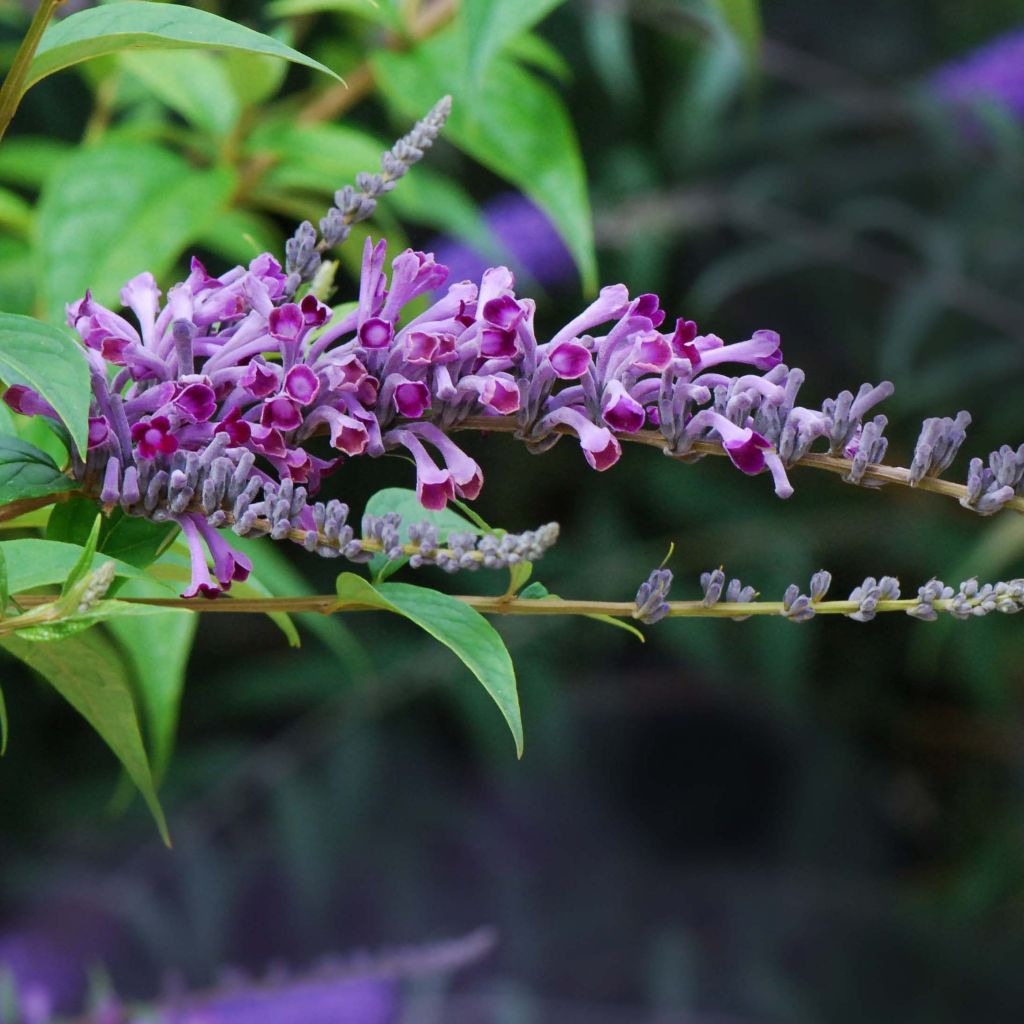

Buddleja lindleyana - Butterfly Bush
Buddleja lindleyana - Butterfly Bush
Buddleja lindleyana
Butterfly Bush, Lindley's Butterfly bush, Weeping Butterfly bush
This item cannot be shipped to the selected country
Delivery charge from €5.90
More information
Schedule delivery date,
and select date in basket
This plant carries a 24 months recovery warranty
More information
We guarantee the quality of our plants for a full growing cycle, and will replace at our expense any plant that fails to recover under normal climatic and planting conditions.
From €5.90 for pickup delivery and €6.90 for home delivery
Express home delivery from €8.90.

Does this plant fit my garden?
Set up your Plantfit profile →
Description
Buddleja lindleyana has a spreading and arching habit, with a very natural appearance. In the heart of summer, its vibrant green foliage blends with its blue-violet flowering in a romantic scene. The bush then takes on a weeping appearance with numerous long and slender pendulous flower clusters. Whether in a pot on a terrace or in a naturalistic-style border, it will be the highlight of summer.
The Buddleja genus includes about a hundred species of deciduous or evergreen shrubs, native to China, Africa, South Asia, and South America. They are named after Adam Buddle, a famous English botanist of the 17th century. This genus can sometimes be spelled 'Buddleia', but the official spelling seems to be 'Buddleja'. They are mostly shrubs with a flexible and irregular habit, giving them a very natural appearance. Some species are considered invasive due to their numerous self-seeding seeds. However, it should be noted that the bush generally colonises areas heavily impacted by humans, particularly urbanised areas.
Native to southeastern China, Buddleja lindleyana is cultivated in the West for its generous ornamental qualities. It has a bushy and spreading habit. Its thick trunk bears numerous slender and arching branches, giving the bush a weeping and wild appearance. It reaches a height of 2 m to 3 m (6.6 ft to 9.8 ft) and a spread of 1 m to 2 m (3.3 ft to 6.6 ft) at maturity. The foliage is a beautiful vibrant green on the upper side and paler on the underside. The leaves are simple, opposite, elliptical, short-petioled, and measure 10 cm to 20 cm (3.9 in to 7.9 in). They have a slight rust-coloured pubescence on the underside. The foliage is semi-evergreen but can disappear completely in harsh winters or persist in mild winters.
In the heart of summer, Buddleja lindleyana is adorned with a unique flowering that lasts until September. The bush is covered in small silver-grey tubular flowers with a deep purple centre. They are slightly curved, and are arranged in long and slender pendulous terminal panicles of about 20 cm (7.9 in) in length. The flower spikes taper at their tip, and the flowers bloom one by one. The weeping silhouette is greatly accentuated by these pendulous clusters. The delicate fragrance emitted by the flowers attracts a profusion of butterflies that flutter around the bush in an endless ballet.
In China, the flowers and roots of Buddleja lindleyana are used for making natural remedies. The stems and leaves are used to make insecticides against mosquitoes, flies, and aphids. They are, however, toxic if ingested.
Gardeners appreciate the long summer flowering of buddlejas and use them in hedgerows, borders, and as standalone plants when their size allows. Thanks to its rather generous proportions, unique appearance, and extraordinary flowering, Buddleja lindleyana can be a key element in your outdoor decor if you have a small garden. It can also be placed at the back of a border to highlight light-foliaged shrubs like the Golden Japanese Spindle Tree or Abelia 'Confetti'. This butterfly bush can enhance a vibrant hedge, alongside Viburnum 'Roseum', Lagerstroemia indica 'Petite Red', or Weigela florida 'Alexandra'. Buddleja lindleyana can easily be grown in pots to add lush vegetation and cascading flowers to terraces and balconies.
Report an error about the product description
Buddleja lindleyana - Butterfly Bush in pictures
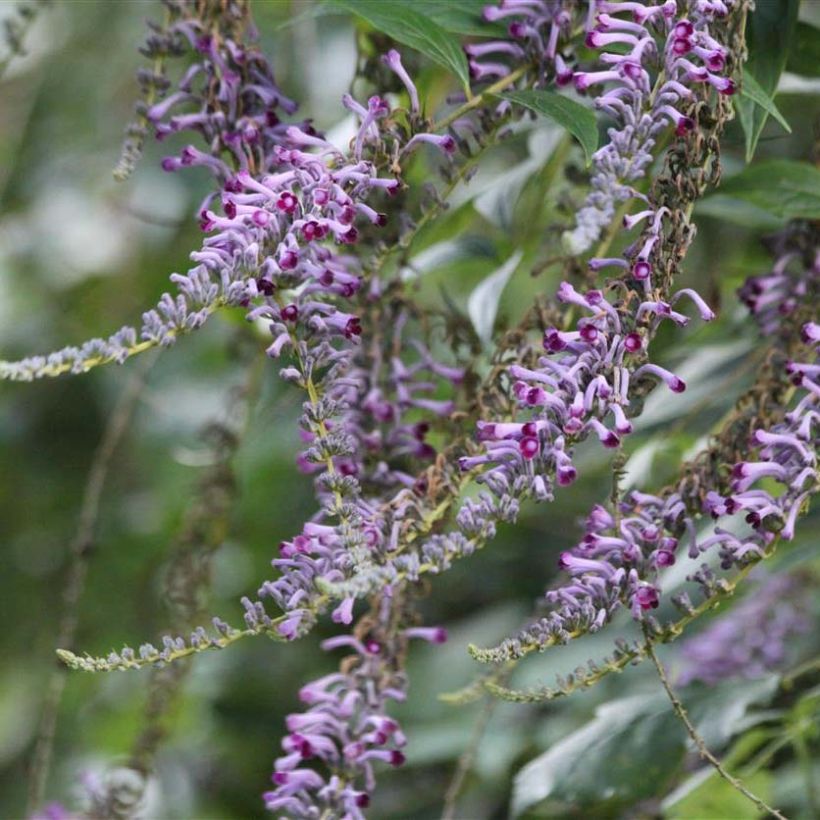

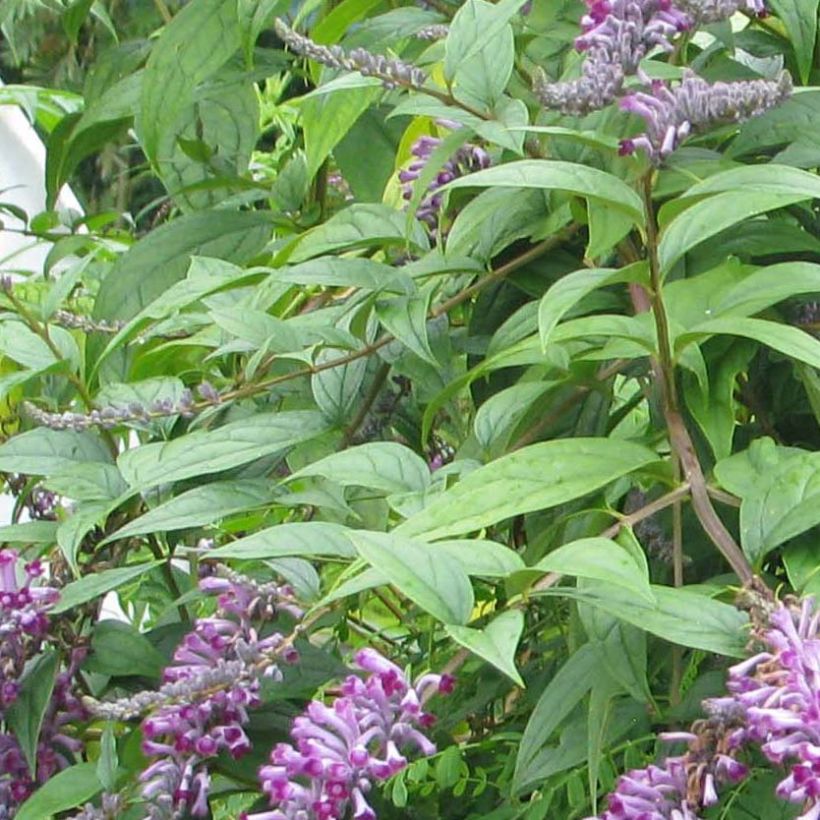

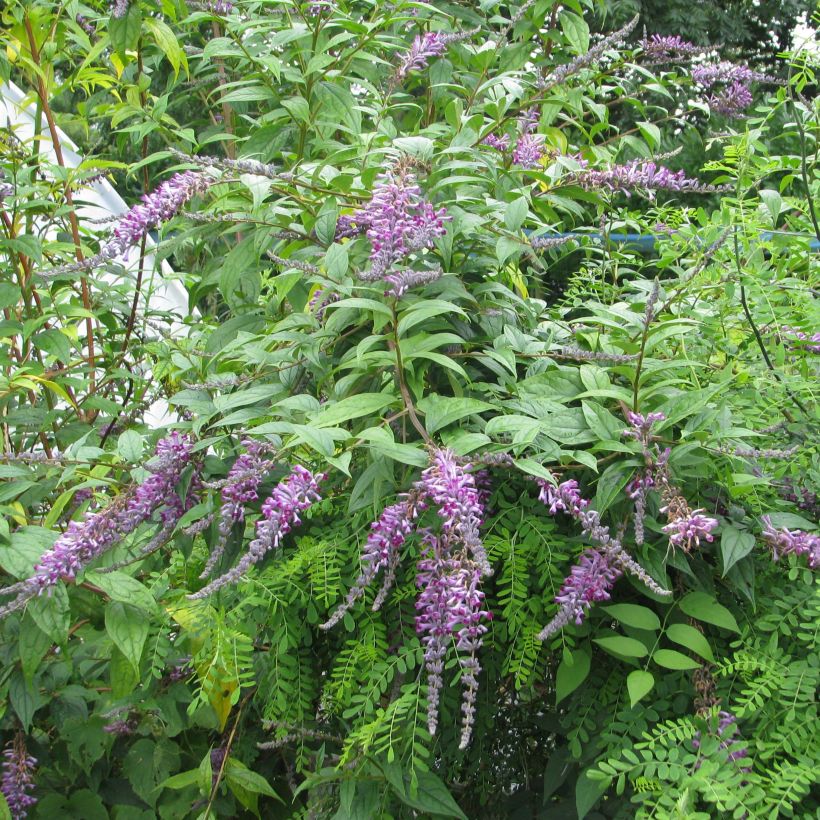

Plant habit
Flowering
Foliage
Botanical data
Buddleja
lindleyana
Buddlejaceae
Butterfly Bush, Lindley's Butterfly bush, Weeping Butterfly bush
China
Other Buddleja -Butterfly bush
Planting and care
In its natural habitat, Buddleja lindleyana grows along paths and rivers or at the edges of forests, mainly in southeastern China. It can even be found at altitudes of over 2000 m (6561.7 ft), making it a very hardy bush that can withstand temperatures below -20° C (-4° F). It prefers sunny or slightly shaded locations, sheltered from strong winds, and tolerates all types of soils, even poor and chalky ones.
Plant in deep, well-drained soil that is slightly enriched. Note that overly rich soil will promote vegetative growth at the expense of flowering. Protect it from excessive moisture in winter. However, it will easily tolerate short periods of drought once established. At the end of winter, ideally in March, severely prune your buddleja to contain its growth, which tends to be disorderly. This operation will help maintain the bush's vigour and promote generous flowering. This buddleja is easy to grow and does not have any particular disease susceptibility.
Planting period
Intended location
Care
-
, onOrder confirmed
Reply from on Promesse de fleurs
Hedge shrubs
Haven't found what you were looking for?
Hardiness is the lowest winter temperature a plant can endure without suffering serious damage or even dying. However, hardiness is affected by location (a sheltered area, such as a patio), protection (winter cover) and soil type (hardiness is improved by well-drained soil).

Photo Sharing Terms & Conditions
In order to encourage gardeners to interact and share their experiences, Promesse de fleurs offers various media enabling content to be uploaded onto its Site - in particular via the ‘Photo sharing’ module.
The User agrees to refrain from:
- Posting any content that is illegal, prejudicial, insulting, racist, inciteful to hatred, revisionist, contrary to public decency, that infringes on privacy or on the privacy rights of third parties, in particular the publicity rights of persons and goods, intellectual property rights, or the right to privacy.
- Submitting content on behalf of a third party;
- Impersonate the identity of a third party and/or publish any personal information about a third party;
In general, the User undertakes to refrain from any unethical behaviour.
All Content (in particular text, comments, files, images, photos, videos, creative works, etc.), which may be subject to property or intellectual property rights, image or other private rights, shall remain the property of the User, subject to the limited rights granted by the terms of the licence granted by Promesse de fleurs as stated below. Users are at liberty to publish or not to publish such Content on the Site, notably via the ‘Photo Sharing’ facility, and accept that this Content shall be made public and freely accessible, notably on the Internet.
Users further acknowledge, undertake to have ,and guarantee that they hold all necessary rights and permissions to publish such material on the Site, in particular with regard to the legislation in force pertaining to any privacy, property, intellectual property, image, or contractual rights, or rights of any other nature. By publishing such Content on the Site, Users acknowledge accepting full liability as publishers of the Content within the meaning of the law, and grant Promesse de fleurs, free of charge, an inclusive, worldwide licence for the said Content for the entire duration of its publication, including all reproduction, representation, up/downloading, displaying, performing, transmission, and storage rights.
Users also grant permission for their name to be linked to the Content and accept that this link may not always be made available.
By engaging in posting material, Users consent to their Content becoming automatically accessible on the Internet, in particular on other sites and/or blogs and/or web pages of the Promesse de fleurs site, including in particular social pages and the Promesse de fleurs catalogue.
Users may secure the removal of entrusted content free of charge by issuing a simple request via our contact form.
The flowering period indicated on our website applies to countries and regions located in USDA zone 8 (France, the United Kingdom, Ireland, the Netherlands, etc.)
It will vary according to where you live:
- In zones 9 to 10 (Italy, Spain, Greece, etc.), flowering will occur about 2 to 4 weeks earlier.
- In zones 6 to 7 (Germany, Poland, Slovenia, and lower mountainous regions), flowering will be delayed by 2 to 3 weeks.
- In zone 5 (Central Europe, Scandinavia), blooming will be delayed by 3 to 5 weeks.
In temperate climates, pruning of spring-flowering shrubs (forsythia, spireas, etc.) should be done just after flowering.
Pruning of summer-flowering shrubs (Indian Lilac, Perovskia, etc.) can be done in winter or spring.
In cold regions as well as with frost-sensitive plants, avoid pruning too early when severe frosts may still occur.
The planting period indicated on our website applies to countries and regions located in USDA zone 8 (France, United Kingdom, Ireland, Netherlands).
It will vary according to where you live:
- In Mediterranean zones (Marseille, Madrid, Milan, etc.), autumn and winter are the best planting periods.
- In continental zones (Strasbourg, Munich, Vienna, etc.), delay planting by 2 to 3 weeks in spring and bring it forward by 2 to 4 weeks in autumn.
- In mountainous regions (the Alps, Pyrenees, Carpathians, etc.), it is best to plant in late spring (May-June) or late summer (August-September).
The harvesting period indicated on our website applies to countries and regions in USDA zone 8 (France, England, Ireland, the Netherlands).
In colder areas (Scandinavia, Poland, Austria...) fruit and vegetable harvests are likely to be delayed by 3-4 weeks.
In warmer areas (Italy, Spain, Greece, etc.), harvesting will probably take place earlier, depending on weather conditions.
The sowing periods indicated on our website apply to countries and regions within USDA Zone 8 (France, UK, Ireland, Netherlands).
In colder areas (Scandinavia, Poland, Austria...), delay any outdoor sowing by 3-4 weeks, or sow under glass.
In warmer climes (Italy, Spain, Greece, etc.), bring outdoor sowing forward by a few weeks.

































